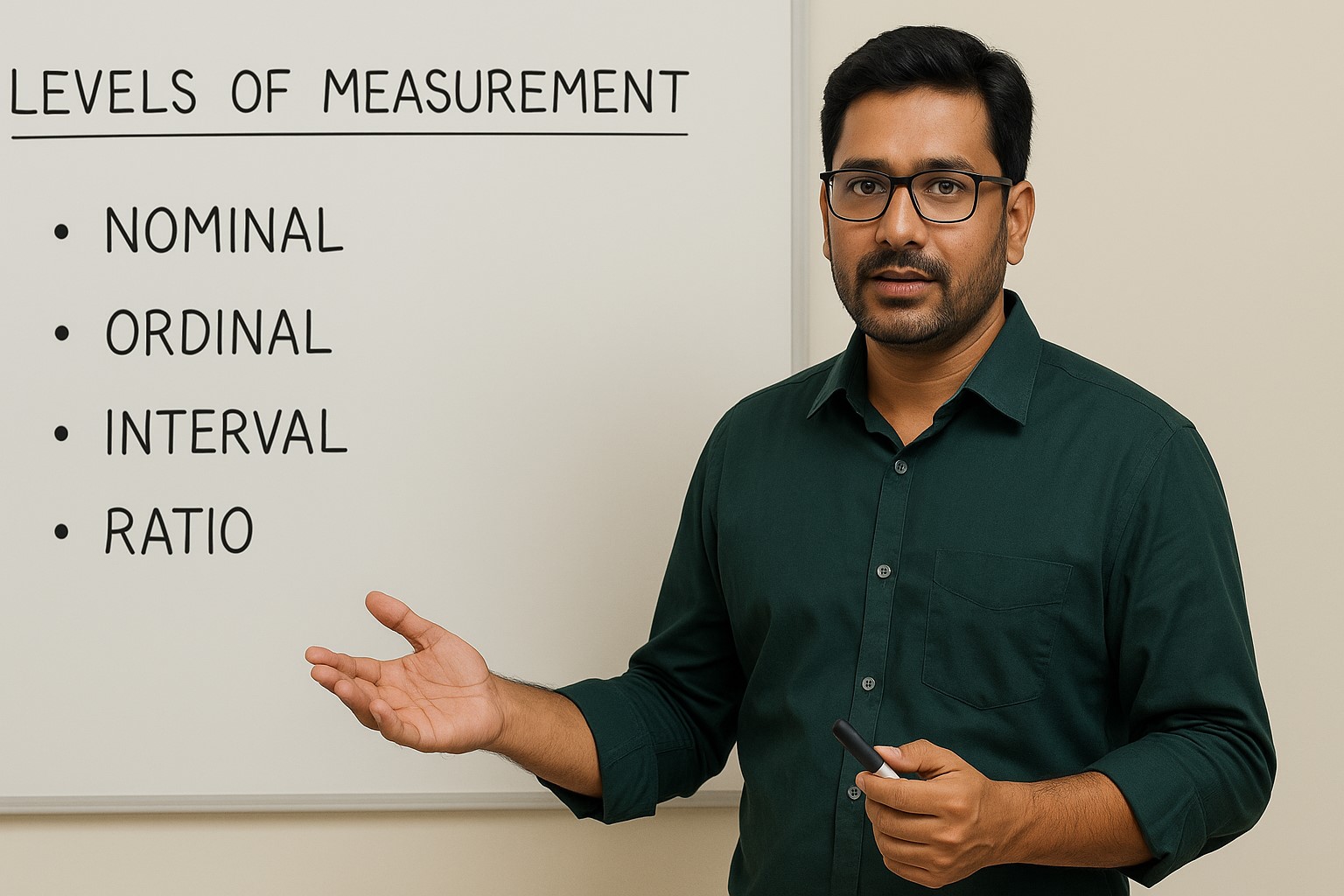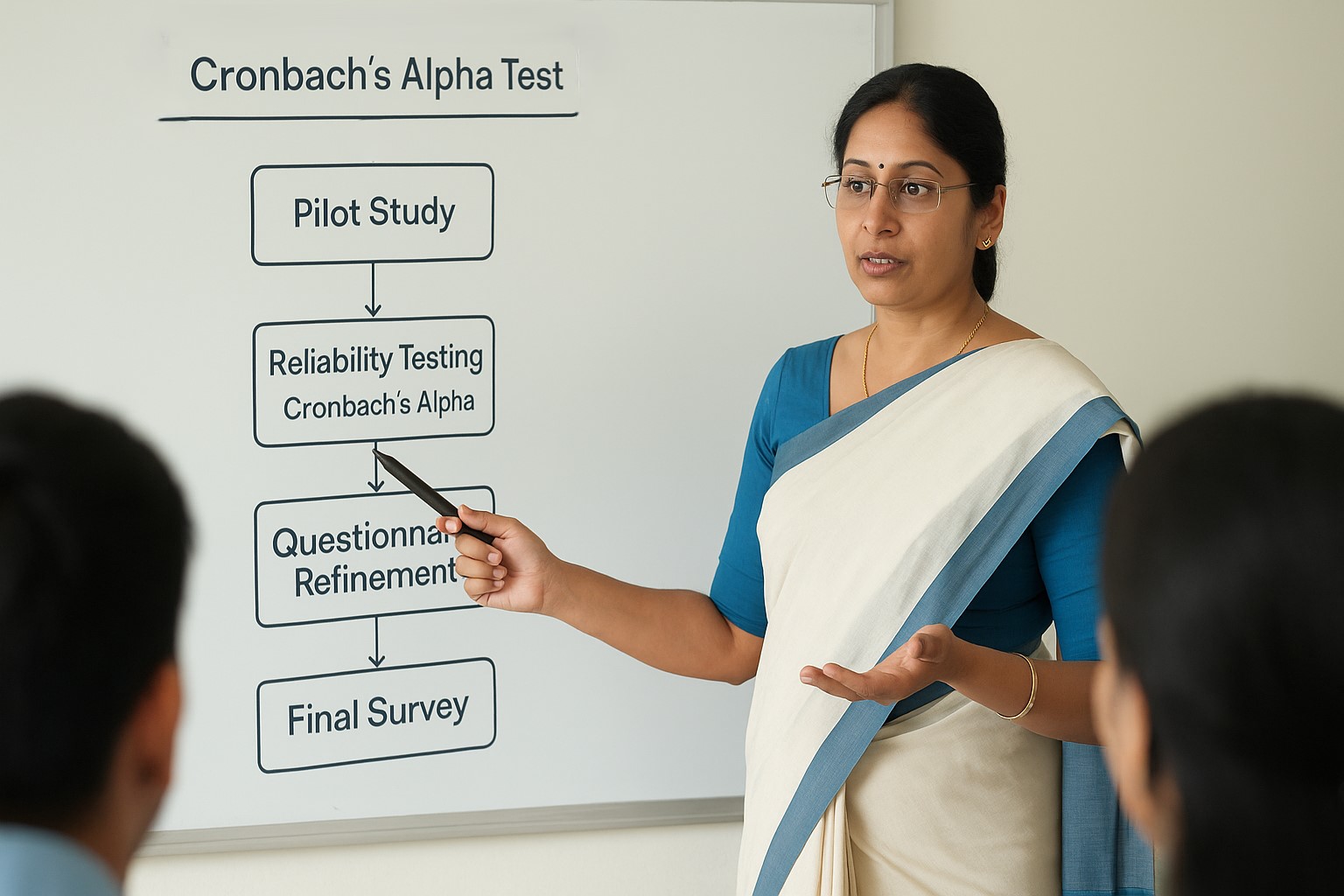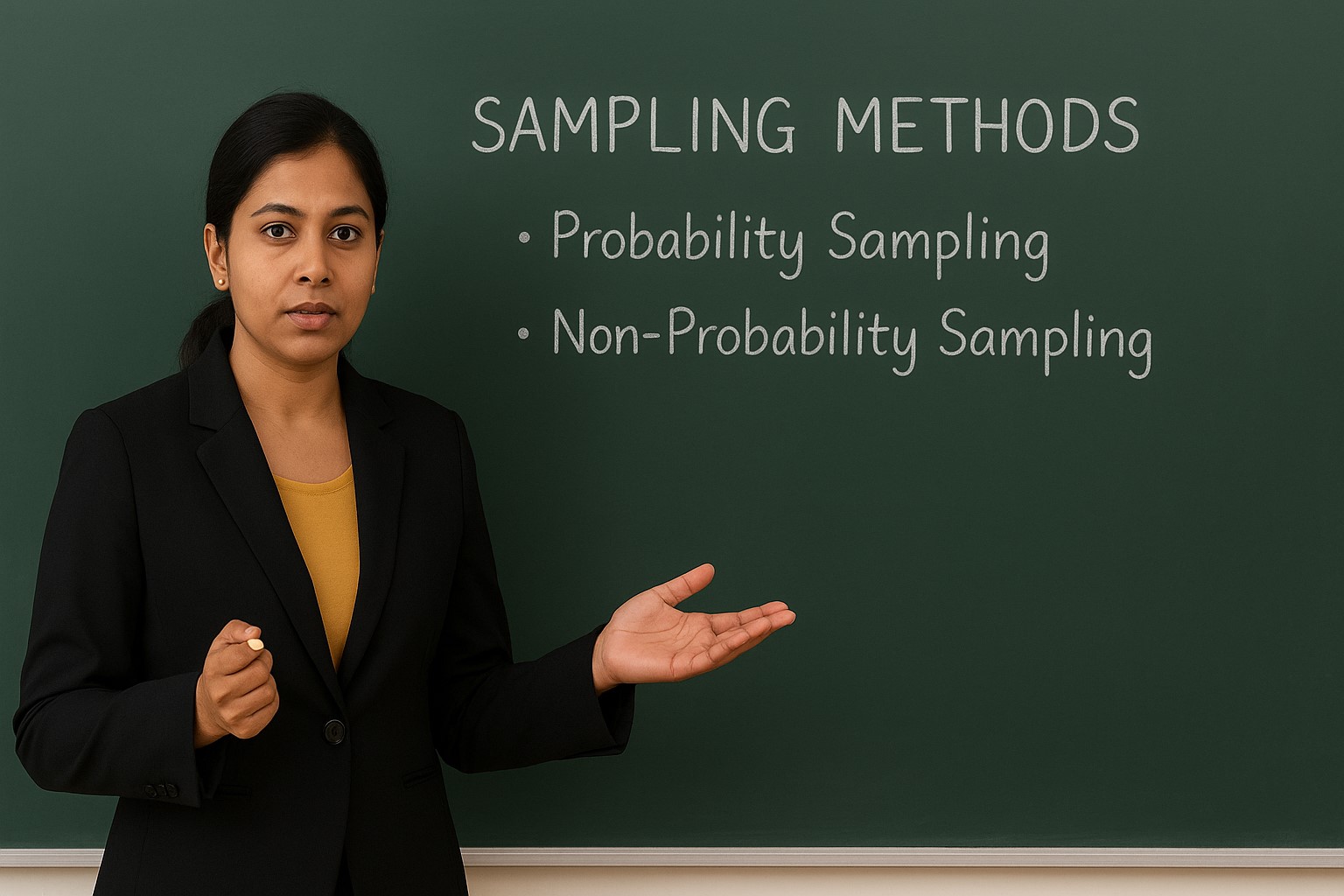

-
Level of Measurement in Research: Understanding the Foundation of Data Analysis
Introduction Every research study, whether in psychology, education, marketing, or medicine, relies on data. However, before any statistical test or analytical technique is applied, researchers must first understand how their data are measured. This understanding is rooted in what is…
-
Identification of Theory behind the Study
Introduction Every research study stands on a foundation that is often invisible yet essential — the theoretical framework that explains why a phenomenon occurs and how different variables are interconnected. This foundation, commonly called the “theory behind the study,” forms…
-
How to manage and present the Data in Research?
Introduction Data is the foundation of every research study. Whether it is quantitative data collected through surveys and experiments or qualitative data gathered through interviews and observations, the way a researcher manages, analyses, and presents data determines the credibility and…
-
Cronbach’s Alpha Test and its Application in Research
Introduction In empirical research, the reliability of measurement instruments is a critical determinant of data quality. Whether a study focuses on students’ motivation, consumer behaviour, or investors’ financial attitudes, researchers must ensure that all questionnaire items consistently measure the same…
-
Multi-Variate Analysis in Research: A Comprehensive Guide
Introduction In research, data analysis plays a crucial role in extracting meaningful insights. When studies involve multiple variables influencing outcomes, multivariate analysis (MVA) becomes indispensable. Unlike univariate or bivariate methods, which analyze one or two variables, MVA examines the relationships…
-
Role of Likert Scales in Research
Research in social sciences, business, health, and education often involves understanding human attitudes, perceptions, and behaviours. Measuring such subjective phenomena requires tools that can quantify opinions reliably. One of the most commonly used instruments is the Likert scale. Developed by…
-
Understanding Type I and Type II Errors in Research
In the world of research and statistics, decision-making often depends on hypothesis testing. While this process allows researchers to draw meaningful conclusions, it also carries the risk of errors. These errors, known as Type I and Type II errors, represent…
-
How to Conduct Validity of a Research Instrument?
When conducting research, the strength of the conclusions largely depends on the quality of the research instrument used for data collection. A poorly designed questionnaire can result in misleading or unusable findings, while a well-validated instrument ensures accuracy, credibility, and…
-
Sampling Methods in Research: A Comprehensive Guide with Examples
Introduction In any research, data collection plays a central role in ensuring the validity and reliability of the findings. However, it is not always possible to collect information from every individual in a population due to limitations of time, cost,…
-
Reliability Test in Research: Meaning, Importance, and Practical Examples
Introduction In the field of research, whether academic, scientific, or applied, one of the most critical aspects of any measurement tool or instrument is its reliability. A research study may have a clear objective, strong theoretical foundation, and advanced statistical…
Author

Dr. D. Sampath Kumar
Latest Posts
Tags
Chi-Square Test of Goodness of Fit Conceptual Framework Cross-Sectional Design Data Analysis Data Collection Data Presentation Descriptive Design Descriptive Statistical Analysis Distribution-Free Test Expected frequency Experimental Design Exploratory Design Goodness of Fit Likert Scales Literature Review Longitudinal Design MANOVA Mixed Multi-Variate Analysis Multi-Variate Analysis of Variance Multiple ANOVA One Sample t-Test Population Primary Data Qualitative Quantitative Questionnaire Research Approach Research Design Research Gap Research Objectives Review of Literature Sample Sampling Sampling Frame Sampling Principles Secondary Data Semantic Differential Likert Scale Simple Sample 't' Test Survey Theoretical Framework Type-I Error Type-II Error Validity Validity of Research Instrument















